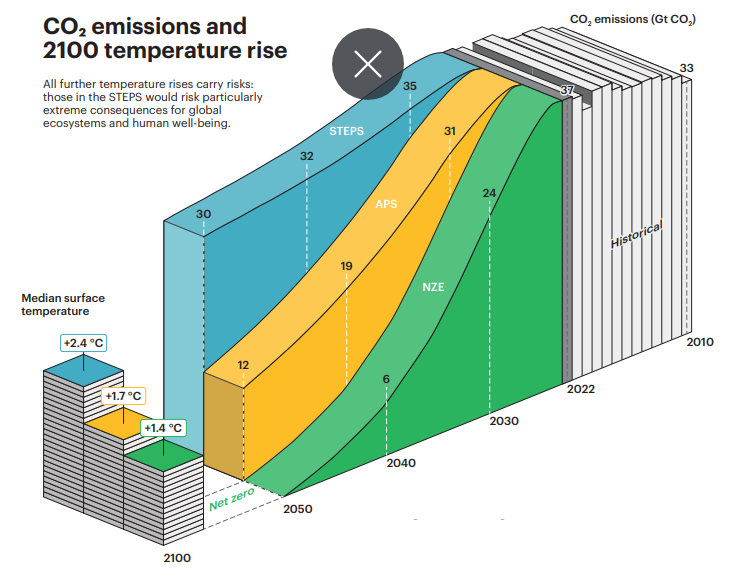“Nuclear Can Reach New Heights”, IEA World Energy Outlook 2023 Says
The International Energy Agency (IEA) published today its latest World Energy Outlook 2023 (WEO).
Fatih Birol, IEA DG, presented this morning the agency’s new report, outlining in his opening speech the work plan for world’s governments to achieve success at COP:
- advanced economies and financial institutions to come up with financing mechanisms to support clean energy financing in developing countries,
- doubling improvement of energy efficiency by 2030,
- tripling RES capacities by 2030,
- oil&gas companies to commit to climate targets by taking measures, including reducing methane emissions by 75% by 2030,
- agreeing to take measures for orderly decline in fossil fuel use, including no new unabated coal plants to be built.
IEA DG emphasised the evolution that the energy sector will see from now to 2030, with more and more clean energy required to make sustainable and decarbonised several sectors, like transport, electricity or heating generation.

CO2 emissions and 2100 temperature rise – IEA World Energy Outlook 2023
According to the report:
Ten years ago, 70% of electricity was produced by fossil fuels – today the share decreased to about 60% (40% generated by renewables plus nuclear), while in 2030, following the current policies, it could be down to 40%.
Today, low-emissions sources of electricity generation mainly include nuclear (9% of electricity generation) and renewables (30%). According to WEO2023, nuclear capacity additions grew by 40% in 2022, with 8 GW coming online, mostly in China, Finland, Korea and Pakistan.
The share of nuclear power remains broadly stable over time in all scenarios – Announced Pledges Scenario (APS), Net Zero Emissions by 2050 Scenario (NZE), Stated Energy Policy Scenario (STEPS) – which lead to different conclusions according to the energy mixes they propose.
Prospects for nuclear power have improved in leading markets, with support for lifetime extension of existing nuclear reactors in a number of countries including Japan, Korea and United States, and support for new reactors in Canada, China, United Kingdom, United States, and several EU member states.
Indeed, more lifetime extensions, which offer one of the cheapest sources of low-emissions electricity, and new construction in countries open to nuclear power boost global capacity in one scenario – known as Announced Pledges Scenario (APS) – to 770 GW in 2050, and to well over 900 GW in the Net Zero Emissions by 2050 Scenario (NZE), where nuclear construction reaches new heights and more than doubles the 417 GW in 2022.
IEA globally projects 2 trillion USD of clean energy investments in 2030 in the Stated Policy Scenario to implement clean energy sources and supporting technologies that will unlock the full potential of clean energy expansion in the energy mix.
Mr Birol underlined in his final message what are the technologies that, with adequate support will enable limiting climate change:
Today we have readily available clean energy technologies which are cost-effective: solar, wind, electric cars, nuclear power, energy efficiency. We just need to expand them strongly.
Read the full World Energy Outlook 2023.




